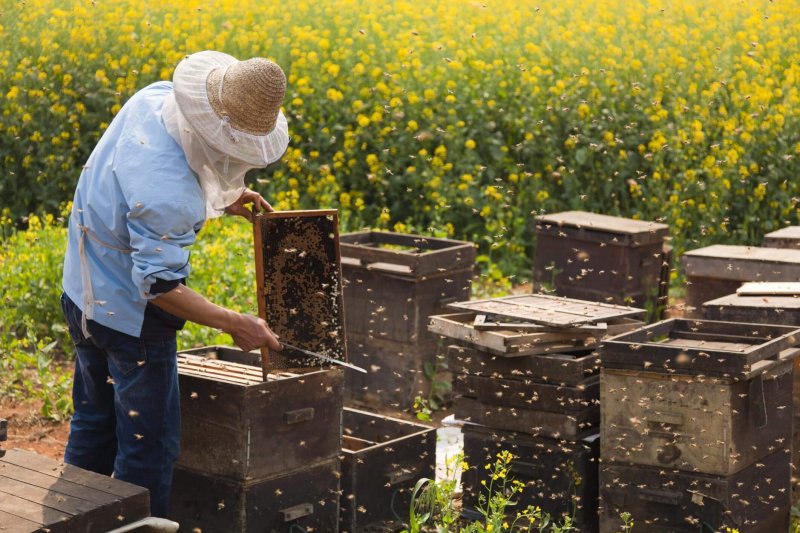Honey bees forage across a large area, continually scouting the local landscape for ephemeral food resources. Beekeepers often rely on flowering plants in and around irrigated farmland to maintain their colonies during dry seasons, despite the potential risk of pesticide exposure. Recent declines in pollinator abundance and diversity have focused attention on the role of pesticides and their effects on honey bee health.
This investigation examined two types of landscapes within a two-mile (3.2 km) radius of honey bee colonies: an intensive agricultural setting and a rural setting without intensive agriculture. More than 10,000 acres of agricultural land was surveyed to quantify the area of cultivated crops and the area treated with pesticides, including seed treatments and foliar applications of insecticides. Samples of honey, bee bread (stored pollen), beeswax, and adult bees were collected from hives in both landscape types and screened for pesticide residues to determine if foraging bees were transporting pesticides to hives. Some samples of bee bread and honey did contain pesticide residues, but these were below known lethal dose (LD50) levels for honey bees. Beeswax samples contained the highest levels of contamination, but most were still relatively low. Samples were screened for 174 common agricultural pesticides and metabolites, but only 26 compounds were detected during the two-year study.
…
Bee colonies foraging in agricultural landscapes are potentially exposed to numerous pesticide applications. While the residues detected in this study did not pose an acute lethal risk to adult honey bees, this study did not measure sublethal effects on bee colony health or performance, which merit further investigation.
…
Recent declines in honey bee populations cannot be attributed to any one single cause, but are likely the result of accumulated stresses from multiple causes. The complex of the mite Varroa destructor and the viruses they vector continues to be the greatest threat to honey bee health. Other pathogens such as Nosema ceranae also affect honey bee health, productivity, and survivorship. Additionally, bees must have access to adequate nutrition from floral resources in order to maintain health. Most likely, a combination of multiple factors, including these and others, are responsible for recent declines in honey bee health and populations. Optimal management of honey bee colonies must include a reduction of multiple stress factors, including sublethal exposure to pesticides, and discussions of honey bee health should not be limited to a narrow focus on pesticide exposure.
…
Despite the widespread use of these chemicals, both hobbyist and commercial beekeepers continue to maintain productive honey bee colonies in intensive agricultural areas. Furthermore, colony productivity has been shown to increase with proximity to crop land, and research has also shown that mass flowering crops can benefit wild and managed bees, despite other risks posed by agricultural practices and land management.
Read full, original article: Comprehensive Survey of Area-Wide Agricultural Pesticide Use in Southern United States Row Crops and Potential Impact on Honey Bee Colonies































